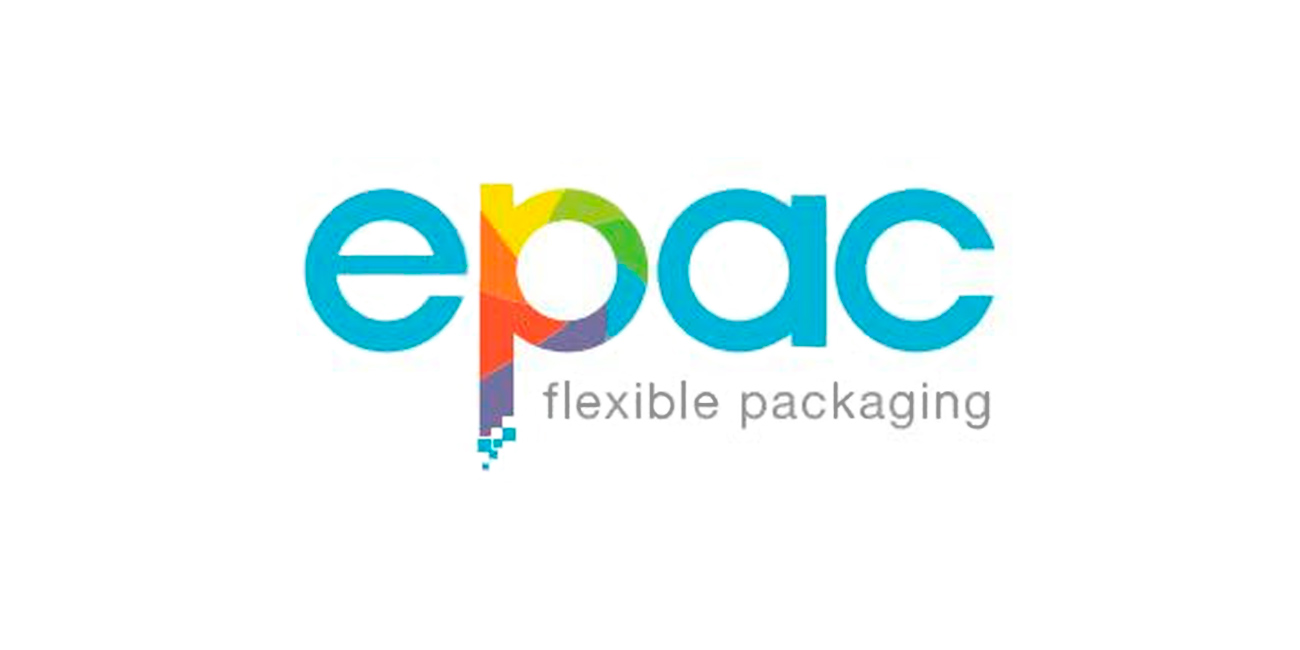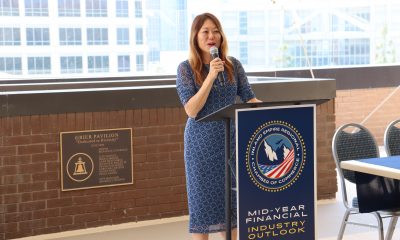Opinion
ePac Flexible Packaging finds home in San Bernardino County; Q&A with Walid Boustani, VP of Operations

Interview with Walid Boustani, VP of Operations, ePac Flexible Packaging

Walid Boustani, VP of Operations, ePac Flexible Packaging
Walid Boustani is the managing partner and VP of Operations of the Boulder and Los Angeles ePac locations. He is a mechanical engineer with an MBA from Drexel University. He has over 20 years of experience in flexible packaging, mainly in Operations ranging from start-ups, turnarounds, to expansions of existing operations. His work in the industry has taken him all over the world, including Europe, the Middle East, and Canada.
ePac LA will focus on regional food manufacturers and contract packagers throughout Southern California and the surrounding area. With a focus on small and medium size businesses, ePac is the only US company based on the latest in digital printing technology, providing brands of all sizes fast time to market, high-definition graphics, low minimum orders, and the ability to customize packaging to select target markets.
Since opening its first plant in 2016, the rapidly growing Delray Beach, Florida-based company will have fifteen locations across the US by the end of 2019, six of which are now operational. In addition, the company has announced expansion into Europe, with its first plant to open in the UK later this year as well. For more information visit ePacFlexibles.com.
Tell us about your site search – what was important to the company’s new location?
We started looking into opening a South California location about one year ago. We wanted to find a business-friendly community and within proximity to our customer base since our mission is to serve the flexible packaging needs of small and medium-sized businesses of local communities. Furthermore, we wanted access to a skilled labor workforce to recruit from. Our workforce needs ranged from machine operator, sales staff and customer service to computer technology workers.
What made San Bernardino County the right choice?
We considered three different counties: San Bernardino County CA, Riverside County CA, and Clark County, NV. The follow up by the San Bernardino Economic Development Agency was second to none. It really made our search easier and eliminated multiple hurdles. In addition, San Bernardino County checked off several items from our wish list: proximity to a large customer base, access to a skilled workforce, and as noted – very business-friendly.
Describe your experience working with the San Bernardino County economic development team:
If I had to rate the experience of working with the San Bernardino County Economic Development Team, I would give it a 5 stars rating. Our questions were acknowledged immediately and answered within 24 hours. We were referred to the right contact people and were given a half day tour of different cities in the County, where the local city officials met us, explained the permitting process and corresponding lead-time to expect. The team really made it easy for us.
What incentives and/or programs have been especially beneficial to ePac in its move to SB County?
We have benefited from the California Competes Tax Credit and we are planning on applying for training grants.
Can you describe your workforce? How does the County help you in terms of talent?
For our business to succeed, we look at a workforce that is a mix of skilled machine operators, sales staff, customer service, and computer technology workers. We expect a high sense of customer service, as the brands we serve are often SMB’s whose livelihood depends on our performance. We value our employees because our success can only be achieved if they are committed and given all the tools to succeed. The county itself has a database of candidates that they put at our disposal.
What would you tell another CEO when considering SB County?
South California, in general, offers one of the biggest markets that a business can hope for. San Bernardino County is well located within this market where business can have access to customers without overpaying for rent or labor. I find myself surrounded by large choices of candidates for every open position, diverse market segments that need my products, and encouraging officials that want my business to be within their city.
As a new resident of San Bernardino County can you share what your experience has been so far of the community.
I’m very pleased with how ePac is being received by the market. We have been selling in CA for about a year, with manufacturing being done out of our Boulder, CO plant, and our value proposition of 10 to 15 business day lead time, small order quantities with the ability to order to demand, is being well received. Our presence online, www.epacflexibles.com, has been well noticed by Southern California SMBs. I highly enjoy sharing my experience with start-ups, compare it to theirs, and listening to what they went through to get to where they are now. From a workforce perspective, so far, I am very happy with the commitment of each employee we hired and I am looking forward to continuing to grow the team. As a resident, San Bernardino County has provided my family and me with a high quality of life, access to relatively affordable housing, excellent education, and proximity to plenty of entertainment and opportunities to enjoy the great outdoors. We are thrilled to call San Bernardino County our home.
About ePac Flexible Packaging
ePac Flexible Packaging is based on the premise that emerging digital technology will significantly disrupt the service and manufacturing models that have served the flex pack industry for decades. Founded in 2016, with a charter to serve small and medium size businesses throughout the United States, ePac is technology driven and built to provide our customers a fast and easy way to buy flexible packaging. Offering competitively priced short to medium run length orders, and 10-day turnaround, ePac is the first supplier in North America built entirely on the latest wide-web digital printing technology – the HP Indigo 20000. With our manufacturing platform optimized to provide industry leading customer service, ePac offers true high-definition custom printing with variable imaging and the elimination of plate fees, while enabling customers to print to demand and avoid inventory and obsolescence costs. With locations throughout the United States; our offices in Austin, Boulder, Madison, Miami, Chicago, Boston, Houston, and Los Angeles are open to serve local and regional brands of all sizes.
Opinion
Surge in Unemployment Among California Youth Linked to Minimum Wage Hikes

“We have to stop touting the minimum wage as a completely harmless policy, or as some kind of remedy for poverty and income inequality… it is neither.”
In the past 18 months, California’s unemployment rate has jumped to the highest in the nation and a new analysis by Beacon Economics suggests that this peculiar increase could be a direct result of the state’s recent minimum wage hikes. Most concerning, according to the report, is that the current unemployment effect is specifically harming some of California’s most vulnerable residents—the state’s youth.
The new report highlights the fact that 90% of newly unemployed Californians over the past year and a half are under the age of 35 with the hardest hit group being teenagers. “This loss of youth work opportunity carries with it real long-run harm,” said Christopher Thornberg, Founding Partner of Beacon Economics and co-author of the new analysis. “It not only denies younger workers a critical source of income it deprives them of work experience that has been empirically shown to improve their chances of long-run success.”
While the recent rise in unemployment in California has occurred in tandem with the state’s minimum wage hikes, the relationship likely extends beyond mere correlation. According to the analysis, the jump in unemployment is incongruous with other measures of the California economy, which have continued to expand at a respectable rate. In fact, both output and household income in the state are robust and growing either faster than or similar to the nation overall. Yet, the unemployment rate in the United States as a whole has barely budged in the past 24 months.
And there is yet another anomaly: throughout the recent rise in unemployment, there has been no corresponding increase in unemployment insurance claims. If laid off tech and entertainment industry workers were driving California’s higher unemployment rate, it would almost certainly be reflected, at least to some degree, in UI claims, according to the analysis.
“For far too long, researchers and advocates alike have held up the minimum wage as a harmless and effective policy remedy for poverty and income inequality, but it is neither of those things,” said Thornberg. “Evidence has shown us that minimum wages don’t do much to address the ills they are intended to correct, but carry a substantial cost, particularly for our state’s future workers.”
Although well intentioned, Thornberg, and co-author Niree Kodaverdian, argue that higher minimum wages cause prices to increase, which end up reducing real incomes for lower-skilled workers. Available data and past empirical studies show that wage floors do very little to divert income from higher income workers to lower income ones, which is how minimum wage laws are typically characterized by proponents.
The specific effect on youth is caused because as labor costs go up relative to other inputs, employers who might have used lower-skilled, entry level workers, such as teenagers, move towards hiring older, more experienced workers, according to the analysis. The idea is that if an employer is legally obligated to pay a higher wage, they will naturally hire more skilled and productive workers to offset higher labor costs. Since those under age 25 make up nearly half of minimum wage workers, this restructuring disproportionally affects the state’s youth.
The report firmly acknowledges the need for policies to help alleviate the strain on lower income households in pricey California but argues that this particular policy remedy doesn’t work as intended, and when pushed too far, can inflict real harm on some of the state’s most vulnerable residents. Better policy options, according to the authors, include the Earned Income Tax Credit, early childhood education, and increased training for lower-skilled adults.
The full analysis can be found here.
Health & Wellness
Conquering Hanger: Smart Strategies for Balanced Blood Sugar

Stay Energized and Focused with These Proactive Tips for Managing Hunger and Mood
Wellness Tips By Sarah Goudie, Nutrition Expert & Guest Writer for IEBJ
We’ve all been there: mornings rushed, constant pivots throughout the day, and suddenly it’s 7 pm with no thought given to food. Looking back on those moments, we all know what we resort to when we’re hangry.
Irritable. Scatterbrained. Shaky. Weak. Reduced impulse control. Tanked.
It’s simply the connection between our stomach and brain, as blood sugar levels can affect the release of hormones like adrenaline and cortisol, the fight or flight and stress hormones.
So, let’s address this blood sugar regulation/hangry cycle by taking care of ourselves in a few different ways.
- Prioritize Protein and Fat Before Your Morning Coffee: Your first meal sets the tone for the day ahead. Starting with protein before your coffee or favorite pastry can help stabilize blood sugar levels and provide satisfaction and sustenance. A handy tip: prepare a batch of hard-boiled eggs or protein pancakes on your day off for convenient grab-and-go options before you head out. Trust me, cold protein pancakes make for a quick and nutritious bite on your way to work! (Try the recipe below!)
- Opt for Balanced Meals: When you have a chance to eat, even if it’s not your ideal meal, prioritize finishing your protein first, followed by your veggies and fruits. If you’re including simple carbohydrates, save those for the end of your meal. This meal sequencing helps regulate blood sugar levels and mood.
- Plan Ahead—Even Days in Advance: Sometimes, waking up 15 minutes earlier isn’t enough to ensure a nourishing breakfast and packed lunch. However, planning earlier in the week can alleviate the morning rush before you start your day. I often create a menu tailored to my work week, carefully considering seasonal foods and my personal goals. While meal prepping is fantastic if you have the time and enjoy leftovers, simply having a plan and doing the shopping can empower you and reassure you that your kitchen is stocked and ready.
- Slow Down: The quality of the foods we eat is important (think locally sourced, sustainable, clean), but so is the timing of our meals, as well as our mood and our focus while eating. Be intentional about meal times—sit down, step away from your desk, TV, or phone, and fully immerse yourself in the experience of eating. Many times, we eat quickly without being mindful. If you must eat on the go, find a quiet spot, whether it’s a park bench or pulled over in your car. Take the time to see, smell, and taste your food.
- SNACK SMART: This last tip is bolded for good reason—it has been a lifesaver for me countless times. Pack snacks. Every day. ESPECIALLY WHEN TRAVELING. We never know what the day will bring, so we must be prepared when we can’t access a full meal. Some of my favorite go-to snacks include “That’s It” bars, “RX” bars, a handful of macadamia nuts, or Paleo Valley protein sticks…not to mention my favorite reusable water bottle (complete with a straw designed to fit perfectly in my car cup holder). Being armed with snacks containing essential nutrients (fat, carbs, protein, and fiber) will help you navigate those moments when you’re tempted to make a fast food run.
*On the topic of fast food: Stay tuned for next month’s article, where I’ll unveil my top picks for healthier alternatives on those unavoidable drive-thru days!
Leaning into these proactive steps can revolutionize your approach to mindful fuel for your body. Embracing protein-rich breakfasts, balanced meal strategies, proactive planning, mindful eating habits, and smart snacking choices nourishes your body. It cultivates a deeper connection with your food and overall well-being. You can take charge of your dietary journey, one thoughtful bite at a time, and savor the rewards of a healthier, more vibrant life.
Check out my favorite protein pancake recipe!
- Servings: 6 small pancakes
- 1 large banana
- 2 large eggs
- 1/2 tsp cinnamon
- 1 tablespoon coconut oil for pan
- 1 scoop of your preferred protein powder
- 1. Preheat skillet
- 2. Blend ingredients above
- 3. Use the coconut oil to prep the pan
- 4. Cook till golden brown
- 5. Serve warm, and add some fun toppings! My go-to toppings are hemp seeds, fresh seasonal fruit, a scoop of almond butter, and a drizzle of honey.
Career & Workplace
California Continues to Struggle with Labor Supply as Employment Expands Modestly

State’s Unemployment Rate Remains Highest In Nation
California’s labor market expanded modestly in April, with total nonfarm employment in the state growing by 5,200 positions over the month, according to an analysis released today by Beacon Economics. March’s gains were revised down to 18,200 in the latest numbers, a 10,100 decline from the preliminary estimate of 28,300.
As of April 2024, California has recovered all of the jobs that were lost in March and April 2020, and there are now 314,300 more people employed in the state compared to February 2020. Total nonfarm employment has grown 1.8% over this time compared to a 3.9% increase in the United States overall. California increased payrolls by 1.2% from April 2023 to April 2024, trailing the 1.8% increase nationally over the same period.
The state’s unemployment rate held steady at 5.3% in April 2024, unchanged from the previous month. California’s unemployment rate is the highest in the nation and remains elevated relative to the 3.9% rate in the United States as a whole. The state continues to struggle with its labor supply, which remained essentially unchanged in April (declining by a negligible 100). Since February 2020, California’s labor force has fallen by -246,200 workers, a -1.3% decline. In comparison, over the past twelve months the nation’s labor force has increased by 0.8%.
Industry Profile
- At the industry level, job gains were mixed in April. Health Care led the way with payrolls expanding by 10,100, an increase of 0.4% on a month-over-month basis. With these gains Health Care payrolls are now 13.6% above their pre-pandemic peak.
- Other sectors posting strong gains during the month were Transportation, Warehousing, and Utilities (3,700 or 0.4%), Leisure and Hospitality (3,100 or 0.2%), Government (2,600 or 0.1%), Education (1,800 or 0.4%), Retail Trade (1,000 or 0.1%), and Wholesale Trade (400 or 0.1%).
- Payrolls decreased a handful of sectors in April. Construction experienced the largest declines, with payrolls falling by -6,000, a contraction of -0.6% on a month-over-month basis. Note that this decline was largely due to late season storms affecting construction projects across the state.
- Other sectors posting significant declines during the month were Manufacturing (-5,300 or -0.4%), Professional, Scientific, and Technical Services (-3,600 or -0.3%), Real Estate (-700 or -0.2%), Finance and Insurance (-700 or -0.1%), Administrative Support (-600 or -0.1%), and Information (-600 or -0.1%).
Regional Profile
- Regionally, job gains were led by Southern California. Los Angeles (MD) saw the largest increase, where payrolls grew by 5,700 (0.2%) during the month. The Inland Empire (2,600 or 0.2%) and San Diego (1,200 or 0.1%) also saw their payrolls jump during the month. However, payrolls fell in Orange County (-2,700 or -0.2%), Ventura (-500 or -0.2%), and El Centro (-2,200 or -0.3%). Over the past year, El Centro (1.9%) has had the fastest job growth in the region, followed by the Inland Empire (1.5%), Ventura (1.4%), Orange County (1.1%), San Diego (0.8%), and Los Angeles (MD) (0.6%).
- In the Bay Area, the East Bay experienced the largest increase, with payrolls expanding by 2,600 (0.2%) positions in April. San Rafael (MD) (200 or 0.2%) and Napa (100 or 0.1%) also saw payrolls increase during the month. However, San Francisco (MD) (-1,700 or -0.1%), Santa Rosa (-600 or -0.3%), and Vallejo (-600 or -0.2%) experienced payroll declines during the month. Over the past 12 months, Vallejo (3.0%) enjoyed the fastest job growth in the region, followed by Santa Rosa (2.3%), Napa (2.2%), San Rafael (MD) (1.6%), the East Bay (0.9%), San Jose (0.2%), and San Francisco (MD) (-0.8%).
- In the Central Valley, Sacramento experienced the largest monthly increase as payrolls expanded by 900 (0.1%) positions in April. Payrolls in Yuba (400 or 0.8%), Bakersfield (300 or 0.1%), Fresno (300 or 0.1%), and Visalia (100 or 0.1%) increased as well. However, payrolls fell in Stockton (-500 or -0.2%), Modesto (-200 or -0.1%), Merced (-200 or -0.3%), Redding (-100 or -0.1%), and Hanford (-100 or -0.2%). Over the past year, Madera (5.7%) had the fastest growth, followed by Yuba (4.2%), Merced (3.7%), Modesto (3.6%), Sacramento (2.5%), Hanford (2.4%), Redding (2.3%), Fresno (2.2%), Visalia (2.1%), Stockton (2.0%), Chico (1.5%), and Bakersfield (1.1%).
- On California’s Central Coast, Salinas (200 or 0.1%) and Santa Cruz (200 or 0.2%) added the largest number of jobs during the month. Santa Barbara (-100 or -0.1%) saw payrolls decline. From April 2023 to April 2024, Salinas (1.9%) has added jobs at the fastest rate, followed by Santa Cruz (1.6%), Santa Barbara (0.8%), and San Luis Obispo (0.5%).
-

 Opinion1 month ago
Opinion1 month agoSurge in Unemployment Among California Youth Linked to Minimum Wage Hikes
-

 Commercial Real Estate Transactions3 weeks ago
Commercial Real Estate Transactions3 weeks agoSRS Real Estate Partners Announces Record-Breaking $6.15 Million Ground Lease Sale of a New Construction Chick-fil-A Property in Murrieta, California
-

 Health & Wellness3 weeks ago
Health & Wellness3 weeks agoBuddha Bars: A Mother’s Innovative Solution to Healthy Snacking
-
By Press Release1 week ago
California Employment Expansion Continues But Still Trails Nation








